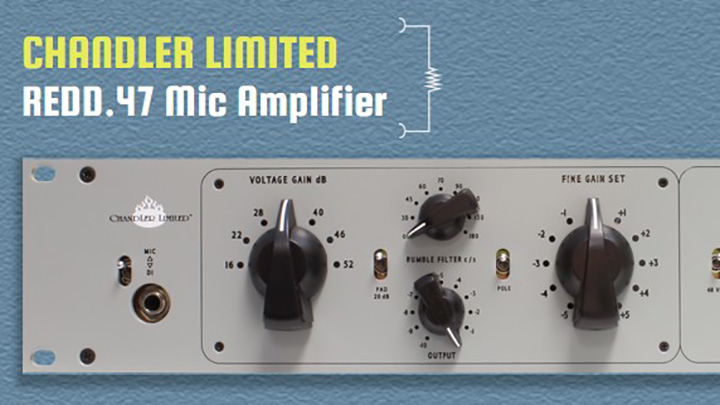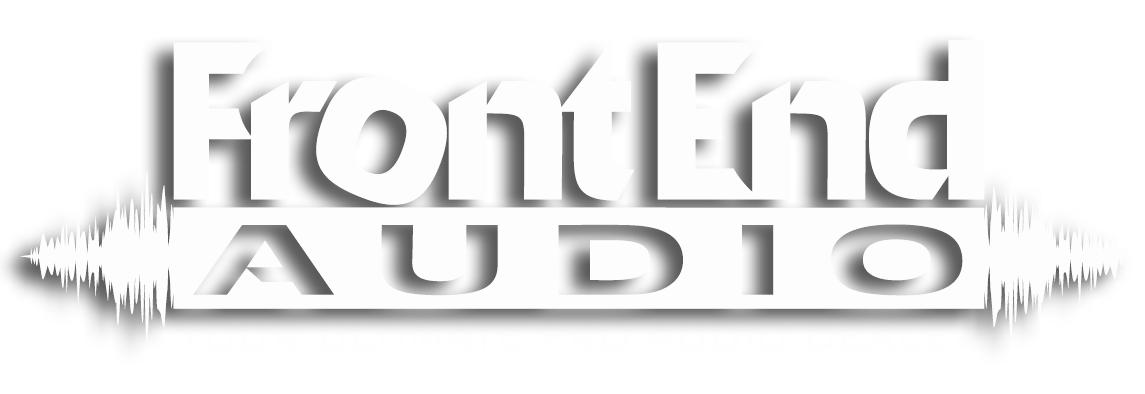Chandler Limited REDD.47 - So much more than a microphone preamp!
By Front End Audio on Jul 21st 2023

Chandler Limited REDD.47 - So much more than a microphone preamp! The Chandler Limited REDD.47 Preamp could be the answer to your tonal prayers! Finally, the hallowed tones of Beatles albums can be yours thanks to this cornerstone circuit. There have been a couple of failed attempts by other manufacturers to clone the REDD.47 circuit. But here is the deal; you need to actually have access to the originals in order to do measurements and also to compare your creation against the benchmark. Chandler Limited's exclusive agreement with EMI/Abbey Road Studios gives Wade and the Chandler Limited crew full access to equipment, schematics, notes, and staff. When Wade has a prototype ready, it's sent to Abbey Road techs for them to independently evaluate and measure. The idea is that the Chandler recreations have to be able to work in place of the originals, without any detectable or measurable difference in performance.
But it's important to understand that the REDD.47 is so much more than just a preamp. Think of it as an audio processor. The REDD.47 is not only Revolution-izing microphone tones, but it is also finding itself regular work as both a parallel distortion processor for thickening / vintagizing tracks, as well as for mixing INTO as a final stage when printing a mix (stereo, obviously, requires a pair). In fact, the REDD.47 is the perfect compliment to a Roll Music Folcrom RMS216 Summing Buss. Since the Folcrom is a totally passive summing mixer, the REDD.47 is perhaps the perfect amplifier for processing the summed signals. AND the Chandler Limited REDD.47 Stereo Preamp Bundle is finding favor as a circuit to process a stereo mix. The key here is to ensure that you lower your DAW or mixer's output and let the REDD.47 do its job, which is to AMPLIFY signal. In fact, this is now becoming the amplifier of choice for this method for a number of top level mix engineers.
Two notable users of the REDD.47 for this application are Michael Brauer and Tony Maserati. More aggressive with more natural top and bottom than the TG preamps (which still sound lovely and big in their own unique fashion), there is something considerably less soft than the TG circuit and the valve electronics really pull things out from low to high. A good example of the pushed low frequency break up of the REDD.47 is the acoustic guitar tracks of "Two Of Us" on Let It Be. The top remains clear, where with good headphones on, or a proper monitor setup in a proper room, you can hear the lows get furry as the distances closed between the guitar and the mic (with level controlled by a little help from some the RS124 Compressor, no doubt). Plus, you hear that little bit of distortion on the harder kick drum hits of Dig A Pony. That distortion really helps to sell the impact of the moment. Plus, there's few preamps which break up in such a musically satisfying way - John Lennon's electric guitar tone on Revolution (the single - the version on Past Masters, Vol 2) is the result of cascading two REDD.47s together. The electric guitar was plugged via a DI into the first unit, and it was cranked to high heavens. The output was taken and fed into the mic input of another REDD.47 and it too was cranked to the high heavens. Don't have a pair? Just record the DI track and reamp the line out into the mic input of the unit and record that. And there you have it. It's a pretty satisfyingly nasty, yet totally usable guitar tone.
Perhaps the most compelling of items in the REDD.47, is the Rumble Filter circuit. Originally, this was set only at 30 Hz... not a particularly flexible filter. However, Wade at Chandler Ltd discovered that the circuit is actually inductor based, and that the inductor contributed to interesting changes in the sound when applied at different knee frequencies. As a result, there are now 30,45,60,70,90,110,130,180hz points. And to us, they sound as if these selections were always a part of the REDD.51 console EQ. Some really familiar sounds begin emerging when going into the higher numbers. Listening to Beatles albums, it's apparent that they had to be very conscious of how much bottom end they were putting onto a recording because of the physical limitations of cutting vinyl. And the "contained" sounds of the rhythm tracks on, say, Revolver, sound suddenly very familiar to processing through the Rumble Filter of the REDD.47. Now, we just worry about sculpting sound so as to fit within the speaker's physical limitations in reproducing tons of low frequency content. So, the need for tonal shaping is still very much alive - not just for practical application, but for artistic as well. And if there's one thing that we are staunch proponent of, is that there is no digital substitute for an exceptional hi-pass filter (rumble filter). And the REDD.47 really delivers one of the best and most tonally / musically satisfying filters ever.
So, apparently, when it comes to taking some creative license, Wade Goeke is a master of staying true to the sound, while enhancing capability of the unit. Front End Audio's customers have been thrilled with the REDD.47,, and we're sure that you will be, too! If there was ever a microphone preamp to start filling a piggy bank for, the REDD.47 is it. But be sure that you save enough for more than one. It's a sound that's best used throughout the project. Need proof? Pretty much any Beatles album from Help! up through The White Album and Let It Be should suffice... not to mention Pink Floyd's Piper At The Gates Of Dawn.









 Sign Up for exclusive sales and offers!
Sign Up for exclusive sales and offers!